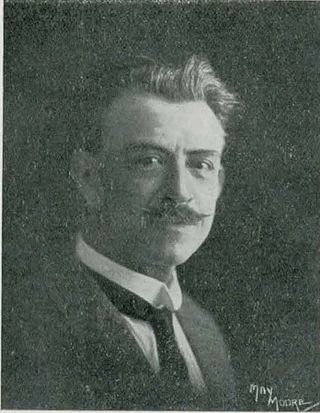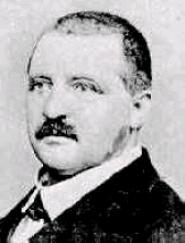Related Research Articles
The String Quartet No. 15 in G major, D. 887, was the last quartet written by Franz Schubert in June 1826. It was posthumously published in 1851, as Op. 161. The work focuses on lyrical ideas and explores far-reaching major and minor modes, which was uncommon to this degree in his compositions. Schubert reinforced this with a range of dynamic contrast and use of texture and pizzicato. The structural form of the movements in this quartet are somewhat ambiguous due to Schubert's focus on lyricism rather than traditional harmonic structure.

Alfred Francis Hill CMG OBE was an Australian-New Zealand composer, conductor and teacher.
Pyotr Ilyich Tchaikovsky's String Quartet No. 1 in D major Op. 11 was the first of his three completed string quartets that were published during his lifetime. An earlier attempt had been abandoned after the first movement was completed.
The Op. 33 String Quartets were written by Joseph Haydn in the summer and Autumn of 1781 for the Viennese publisher Artaria. This set of string quartets has several nicknames, the most common of which is the "Russian" quartets, because Haydn dedicated the quartets to the Grand Duke Paul of Russia and many of the quartets were premiered on Christmas Day, 1781, at the Viennese apartment of the Duke's wife, the Grand Duchess Maria Feodorovna. The "Russian" quartets were some of Wolfgang Amadeus Mozart's favorite works by Haydn and in 1785 Mozart dedicated six string quartets to Haydn in admiration of the quartets.
Antonín Dvořák wrote his String Quartet No. 10 in E♭ major, Op. 51 (B. 92), in 1879 at the request of Jean Becker, the leader of the Florentine Quartet. It is sometimes nicknamed the Slavonic Quartet. The quartet was dedicated to Jean Becker; it was first performed by the Joachim Quartet at a private chamber music evening on July 29, 1879, in Berlin. It was published by Simrock, Berlin, in 1879.

The String Quartet in C minor WAB 111, was composed by Anton Bruckner's in 1862 during his tuition by Otto Kitzler.
The six string quartets, K. 168–173, were composed by Wolfgang Amadeus Mozart in late 1773 in Vienna. These are popularly known as the Viennese Quartets. Mozart may have hoped to have them published at the time, but they were published only posthumously by Johann André in 1801 as Mozart's Op. 94.
Alfred Hill composed his String Quartet No. 3 in A minor "The Carnival", Stiles 1.2.3.3 SQ3, in 1912, while he was a member of the Austral String Quartet. The manuscript score is preserved in the National Library of Australia. In 1955, Hill transformed the quartet into his Symphony No. 5. The quartet is composed in four movements with an average duration of 20 minutes.
String Quartet No. 2 in G minor "A Maori Legend in Four Scenes", Stiles 1.2.3.3 SQ2, often called "Maori Quartet", was composed by Alfred Hill in 1907–1911 and premiered immediately in 1911. It is dedicated to Earnest [sic] Wunderlich — "in slight appreciation". The first two quartets were published together by Breitkopf & Härtel in 1913. Each of them used to be referred as Maori, a feature that can lead to confusion. Today the first one is called Maori, while for the second the longer subtitle is retained.
Symphony No. 1 in B-flat major, Stiles 1.3.4.1 Sy1, the so-called Maori Symphony, is the first symphony by Alfred Hill. Its first three movements were completed by 1898, but the last movement remained unfinished. This may have been the second symphony composed in the Antipodes. The first two movements of this symphony are the only symphonic movements by Hill not to be arranged from his earlier chamber music. The Finale was reconstructed by Allan Stiles, and the whole symphony got its first performance in 2007. The approximate duration is 40 minutes.
Violin Sonata No. 4 in C minor "Maori Sonata", Stiles 1.2.1.6 So4, is a sonata for violin and piano by Alfred Hill composed ca.1909. It was premiered on 6 April 1910 by Cyril Monk and Laurence Godfrey Smith in the YMCA Hall, Sydney. Its approximate duration is 18 minutes.
Violin Sonata No. 3 in A minor, Stiles 1.2.1.6 So3, is a sonata for violin and piano by Alfred Hill. Its music originates from his Piano Trio in A minor, Stiles 1.2.2.1 TrA. It has no precise dating, but was obviously finished after Violin Sonata No. 2 : most probably in 1907. It was performed on 6 July 1908 at the YMCA Hall in Sydney by Cyril Monk and Constance Brandon Usher. Hill later arranged this sonata for flute and piano.
String Quartet No. 4 in C minor, Stiles 1.2.3.3 SQ4, was completed by Alfred Hill on 25 July 1916 in Neutral Bay, Sydney. It is dedicated to Henri Verbrugghen and his Verbrugghen String Quartet. It is Hill's first non-program string quartet. The first two movements were transcribed for orchestra in 1955 forming the basis of the Symphony No. 4 "The Pursuit of Happiness" in which this music turns to have a program.
Symphony No. 4 in C minor "The Pursuit of Happiness", Stiles 1.3.4.1 SyP, was finished by Alfred Hill in 1954 or 1955. Its first two movements were arranged from Hill's String Quartet No. 4 (1916), while the last one derives from the finale of his String Quartet No. 17. The symphony is dedicated "to my esteemed friend Henry Kripps", a prominent Australian conductor. Its approximate duration is 20 minutes.
String Quartet No. 5 in E-flat major "The Allies", Stiles 1.2.3.3 SQ5, was completed by Alfred Hill on 24 June 1920 in Sydney. It is dedicated to Henri Verbrugghen, whose quartet gave the first public performance of the composition on 2 March 1921. The music of the quartet presents four nations who were allies during World War I. It was subsequently arranged by Hill for string orchestra as his Symphony No. 11 "The Four Nations". The approximate duration of the quartet is 29–33 minutes, which makes it one of the most substantial quartets composed by Hill.
Symphony No. 11 in E-flat major "The Four Nations" for string orchestra, Stiles 1.3.3.1 SyFN, was arranged by Australian composer Alfred Hill from his String Quartet No. 5 "The Allies" at some point in 1950s, but the precise date remains unknown, and there is no information about the first performance. The music of the symphony follows that of the original String Quartet, except for the Finale being 4 bars shorter than in the quartet, due to a minor truncation of the melody of the main subject at each repeat of it. The most obvious difference is the addition of the double bass part. Hill also altered the title of the composition.
String Quartet No. 6 in G major "The Kids", Stiles 1.2.3.3 SQ6, by Alfred Hill bears dedication: "for the young fry at the New South Wales State Conservatorium of Music". It was most likely written for the student string quartet groups at the Conservatorium mentored by the composer. The manuscript is dated 3 September 1927. Its technical demands being limited, it is an accessible for amateurs composition. The quartet is set in earlier style, reminiscent of Haydn, Schubert, and other classical composers. With approximate duration of only 15–16 minutes, this is the shortest of all Hill's quartets.
String Quartet No. 7 in A major, Stiles 1.2.3.3 SQ7, by Australian composer Alfred Hill was commenced in Melbourne and finished in Sydney on 18 November 1934, as stated in the manuscript score preserved in the National Library of Australia. It is thought to be the last of Hill's middle period quartets, with some impressionistic features being transitional to his later compositions. Approximate duration is 20,5 minutes.
String Quartet No. 8 in A major, Stiles 1.2.3.3 SQ8, by Australian composer Alfred Hill was finished half month after his Seventh: the manuscript score and parts, which are preserved in the National Library of Australia, are dated 6 December 1934. While the previous quartet was a somewhat transitive composition from his middle period, with the Eighths one starts counting Hill's late quartets. It is thematically unified and has many impressionistic features. In 1950s Hill arranged it into a string symphony, the first known performance of which was on 27 March 1957. The approximate duration of the quartet is 25–28 minutes.
The Piano Quartet in B♭ major, Op. 41, also known as the Piano Quartet No. 2, was written by Camille Saint-Saëns in February 1875. Dedicated to Jules Foucault, it was premiered on 6 March 1875 in Paris. It has been called one of Saint-Saëns' neglected masterpieces and is in the core repertoire of the piano quartet.
References
- 1 2 Allan Stiles. A Catalogue of the Music of Alfred Hill
- 1 2 Lam, Y. C. (2006, June). Analytical study of Alfred Hill’s String Quartet no. 2 in G minor (Thesis, Master of Arts). University of Otago
- ↑ Stephen Pleskun (17 January 2012). A CHRONOLOGICAL HISTORY OF AUSTRALIAN COMPOSERS AND THEIR COMPOSITIONS: (VOLUME 1: 1901–1954). Xlibris Corporation. p. 158. ISBN 978-1-4653-8226-9.
- 1 2 3 Donald Maurice. Booklet notes to Naxos 8.570491
- ↑ E.g.: "the two sonorous Maori String quartets" ( Historical Studies. 1944. p. 65.); "two Maori String quartets" (Richard Appleton (1983). The Australian Encyclopaedia. Grolier Society of Australia. p. 141. ISBN 978-0-9596604-2-5.)
- ↑ In notes to Naxos 8.570491 this quartet is called Maori. However, in Stiles's catalogue this title is reserved for the Second, while the First quartet lacks there any special name.
- ↑ Rhoderick McNeill (23 March 2016). The Australian Symphony from Federation to 1960. Routledge. pp. 55–. ISBN 978-1-317-04087-3.